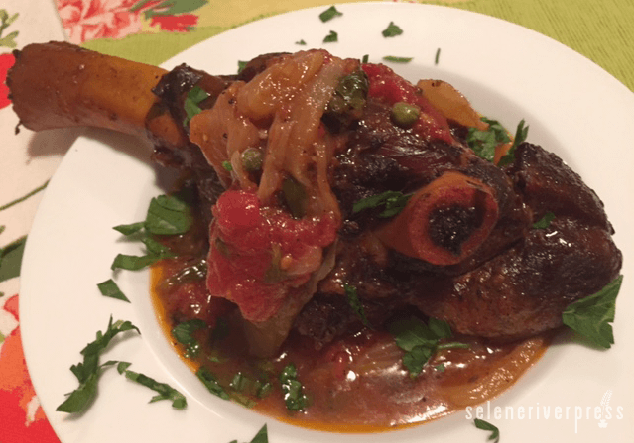Easter is just around the corner, and this time of year always brings me thoughts of the small island in the Pacific Northwest where I grew up. With spring came lush green meadows, heavenly scented orchards, and glorious dewy mornings. The island was also a prime location for raising sheep, so much so that it was well-known throughout the region for producing succulent, tender lamb. So perhaps it’s no surprise that to this day, when I think spring, I always think lamb.
Not all of us are fortunate enough to grow up in such a pastoral setting, but that doesn’t mean we can’t get quality lamb. Due to its rise in popularity, lamb is increasingly available. These days you can find excellent meat in many local regions, and you can also purchase imported lamb, especially from New Zealand. Whenever possible, it’s important to seek out grass-fed lamb over grain fed. Grass-fed meat is higher in nutrient density, with considerably more vitamins and minerals—particularly beta-carotene, vitamin E, zinc, and iron. Meat from ruminants also contains significantly higher levels of omega-3 fatty acids and conjugated linoleic acid than you’ll get from grain-fed animals.
Now that I’m in Colorado, spring doesn’t hit us quite as early as it does back home. I still crave the light fare and fresh flavors offered by the newly sprouted first vegetables of the season. But sometimes, when winter just won’t let go, I’ll serve something hearty and succulent. One such quintessential dish that graces many spring feasts is a roast leg of lamb. In the following recipe, a slow-cooked lamb shank pays homage to both spring and winter. The mint and basil keep the dish bright and also complement the tomatoes and lamb perfectly. The marrow and cartilage in the shanks combine to create a luscious sauce rich in gelatin and minerals. Serve this over mashed potatoes or soft polenta, or with a piece of crusty bread to sop up the juices.
Lamb Shanks with Tomato, Mint, and Basil
Prep time: 30 minutes
Cook time: 3–4 hours
Serves 4
Ingredients
4 lamb shanks
Salt and pepper
Beef tallow or other high-heat fat
1 large onion, sliced
1 bulb fennel, sliced
6 cloves garlic, chopped
1 cup white wine
1 (28 oz.) jar whole tomatoes, with juice
¼ teaspoon red pepper flakes
¼ cup basil, roughly chopped
2 tablespoons mint, roughly chopped
Instructions
- Preheat the oven to 300°F. Season lamb with salt. In a large Dutch oven, heat a couple tablespoons of fat. Sear lamb over medium heat, two shanks at a time, until browned on all sides. Transfer to a large bowl or plate. Set aside. Repeat with remaining shanks, adding more fat if necessary.
- Pour off all but 2 tablespoons of fat from pot. Add onions, fennel, and garlic. Sauté until lightly golden. Add wine and bring to a boil, scraping up browned bits in pot with a wooden spoon. Reduce wine by about a quarter. Add tomatoes, breaking up slightly with your hands or the spoon. Add red pepper flakes and a good pinch each of salt and pepper. Return shanks to pot. Bring to a boil on stovetop, then cover and place in the oven.
- Cook for 3 hours, rearranging shanks and turning over in sauce about every hour. Check shanks for tenderness with a fork. If necessary, return to the oven and continue cooking for an additional 30–60 minutes. (Don’t worry, you’ll have a hard time overcooking them.)
- Once shanks are tender, remove from oven. Transfer to individual dishes. Stir herbs into sauce, and pour over each serving.
AUTHOR’S NOTE
To choose your organically grown and fresh ingredients wisely, use the following criteria:
- chemical- and hormone-free meat
- wild-caught fish
- pasture-raised, organic eggs
- whole, unrefined grains
- virgin, unrefined, first-press organic oils
- whole-food, unrefined sweeteners
- pure, clean, spring water
- sea salt
- raw and/or cultured milk and cream products


